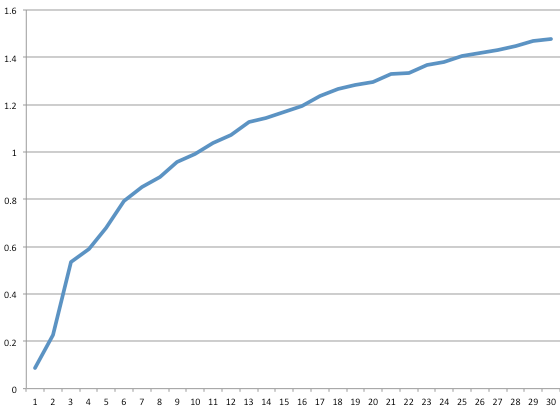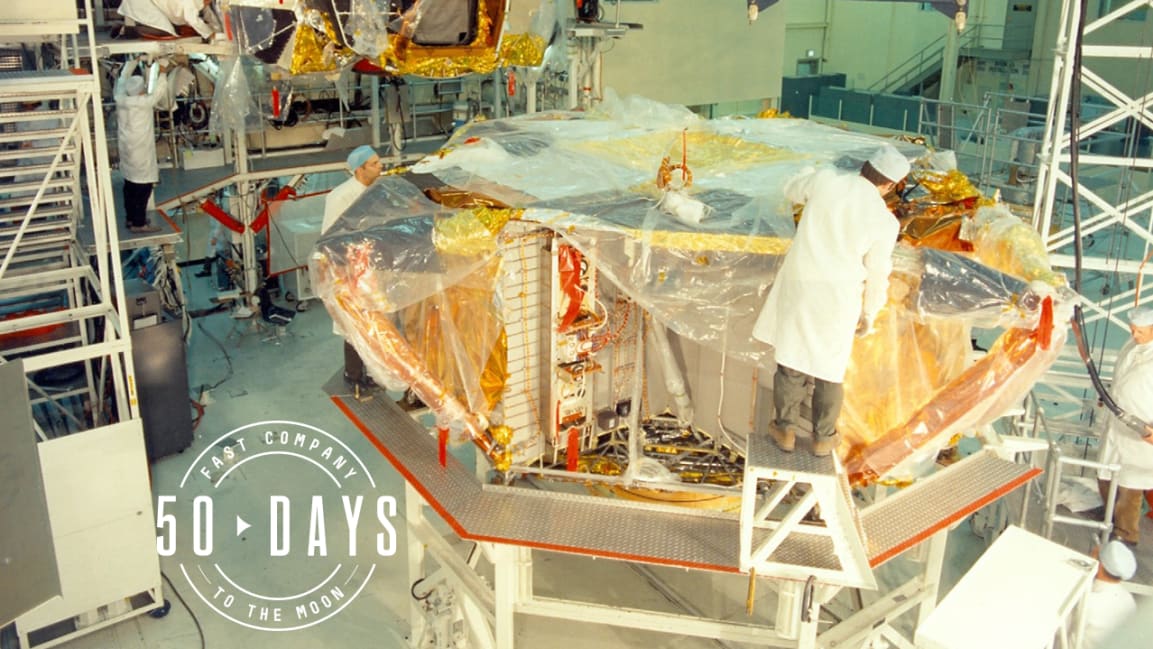   
CEO Picks - The most popular editorials that have stood the test of time!
Identify - and Hire - Lifelong Learners
 The most pertinent question one can ask of a current or future employee may just be: How do you learn? Lifelong learning is now roundly considered to be an economic imperative, and job candidates or employees who consider, update, and improve their skills will be the high performers, especially over the longer term. Pressing ourselves on the question of how we learn brings a hard, pragmatic edge to the important but nebulous notion of growth mindset. The world and the workplace have changed considerably in the past year. The skills we need to function and flourish have correspondingly changed, and so we need to bring them into a smarter, sharper focus to know what they are and to seek them out proactively, persistently, and methodically. The most pertinent question one can ask of a current or future employee may just be: How do you learn? Lifelong learning is now roundly considered to be an economic imperative, and job candidates or employees who consider, update, and improve their skills will be the high performers, especially over the longer term. Pressing ourselves on the question of how we learn brings a hard, pragmatic edge to the important but nebulous notion of growth mindset. The world and the workplace have changed considerably in the past year. The skills we need to function and flourish have correspondingly changed, and so we need to bring them into a smarter, sharper focus to know what they are and to seek them out proactively, persistently, and methodically.
Continued here
|
� | � |  | Does Birth Order Really Determine Personality? Here's What the Research Says
 One Friday afternoon at a party, I'm sitting next to a mother of two. Her baby is only a couple of weeks old. They'd taken a long time, she tells me, to come up with a name for their second child. After all, they'd already used their favorite name: it had gone to their first. One Friday afternoon at a party, I'm sitting next to a mother of two. Her baby is only a couple of weeks old. They'd taken a long time, she tells me, to come up with a name for their second child. After all, they'd already used their favorite name: it had gone to their first.
On the scale of a human life, it's small-fry, but as a metaphor I find it significant. I think of the proverbs we have around second times - second choice, second place, second fiddle, eternal second. I think of Buzz Aldrin, always in the shadow of the one who went before him, out there on the moon. I think of my sister and my son: both second children.
Continued here
|
| � |  | Two types of growth
 Anything you try to improve will have a growth curve. Imagine you ran everyday and you tracked your speed to finish a 5-mile course. Smoothing out the noise, over enough time you'd probably get a graph like this: Anything you try to improve will have a growth curve. Imagine you ran everyday and you tracked your speed to finish a 5-mile course. Smoothing out the noise, over enough time you'd probably get a graph like this:
Here, improvement works on a logarithmic scale. As you get better, it gets harder and harder to improve. Elite athletes expend enormous effort to shave seconds off their best times. Novice athletes can shave minutes with just a little practice.
Logarithmic growth is the first type of growth. This is where you see a lot of progress in the beginning, but continuing progress is more difficult.
Now imagine a different graph. This time you've built a new website you update regularly and you're measuring subscribers. This graph would likely look very different:
Continued here
|
The Competencies and Constraints That Determine Leadership Success
 As a leader, you may sense the heavy mantle of work to be done, employees to motivate, bosses to impress, organisational culture to manoeuvre. Most leadership theories place all these burdens squarely on your shoulders: How you handle them all is entirely up to you. Concepts such as transparent leadership neglect external factors. Although leaders may be highly talented individuals, they are constrained by their environment and their own internal conditions. As a leader, you may sense the heavy mantle of work to be done, employees to motivate, bosses to impress, organisational culture to manoeuvre. Most leadership theories place all these burdens squarely on your shoulders: How you handle them all is entirely up to you. Concepts such as transparent leadership neglect external factors. Although leaders may be highly talented individuals, they are constrained by their environment and their own internal conditions.
Rather than making leaders solely responsible for their own effectiveness, we can allow a balance between managerial competences and the many constraints that limit leaders. With bounded leadership, we look past the leader's characteristics and consider the many constraints they encounter at the individual, team, organisational and stakeholder levels.
Continued here
|
| � |  | What Bosses Really Think of Remote Workers
 People who work from home get fewer raises and promotions. But there might be a way to avoid the remote-work penalty. People who work from home get fewer raises and promotions. But there might be a way to avoid the remote-work penalty.
America's CEOs have a message for people who love working from home: Your happy days are numbered. Remote work is "suboptimal," Jonathan Wasserstrum, the CEO of the New York commercial-real-estate company SquareFoot, told me. "I believe that work is better when most of the people are in the office most of the time together," he said. As if to prove his point, at that moment our phone connection grew fuzzy, prompting him to sarcastically add, "Oh, because remote is so great, right?"
What really gets Wasserstrum's goat is when people say no one should come into the office, because that would be more fair to the people who don't want to come into the office. He said that although he wouldn't fire someone for asking to work remotely full-time, SquareFoot is a real-estate company. "If somebody didn't believe in the value of an office at least one day a week, they probably shouldn't be at the company anyway," he said. At a recent Wall Street Journal conference, WeWork CEO Sandeep Mathrani cheered cubicle life even louder, saying that the most "engaged" workers are those who want to work from the office most of the time. "People are happier when they come to work," he added confidently.
Continued here
|
| � |  | Here's Why So Many People Intend to Die With Money in the Bank
 There's a school of thought that you should spend down all your assets in retirement and "bounce the check to the undertaker," as Michael Bloomberg, founder and majority owner of Bloomberg LP, our publisher, likes to say. But not many Americans subscribe to that school of thought. A fascinating survey from the Employee Benefit Research Institute explores how people feel about spending in retirement. It doesn't fit with finance theory. "There's just something we're not getting quite right in understanding how people navigate retirement," Lori Lucas, the president and chief executive officer of EBRI, said March 24 in announcing the results. There's a school of thought that you should spend down all your assets in retirement and "bounce the check to the undertaker," as Michael Bloomberg, founder and majority owner of Bloomberg LP, our publisher, likes to say. But not many Americans subscribe to that school of thought. A fascinating survey from the Employee Benefit Research Institute explores how people feel about spending in retirement. It doesn't fit with finance theory. "There's just something we're not getting quite right in understanding how people navigate retirement," Lori Lucas, the president and chief executive officer of EBRI, said March 24 in announcing the results.
Only 14.1% of respondents think they'll spend down all their assets. 57% plan to grow their assets in retirement, leave them untouched, or spend down only a little.
Continued here
|
| � |  | How the space program created a culture of learning from failure
 In space, every failure could equal disaster. On Earth, they were priceless gifts. In space, every failure could equal disaster. On Earth, they were priceless gifts.
The Apollo lunar module was a special spaceship in many ways. It was the first - and still the only - crewed spaceship designed just to be used in space. That's why it looks so spindly and gawky. It never had to fly through the atmosphere, so it could be designed with almost pure utility, without the sleekness and protection required to account for atmospheric friction or drag.
But that special quality of the lunar module created a really huge problem: It couldn't be flight-tested before use. The first time each lunar module got a shakedown flight was the moment it was being used in space. It also meant that the astronauts flying the lunar module could only ever learn to fly it using simulators (also designed by people who had never flown lunar modules).
Continued here
|
| � |  |
 | TradeBriefs Publications are read by over 10,00,000 Industry Executives |

 The most pertinent question one can ask of a current or future employee may just be: How do you learn? Lifelong learning is now roundly considered to be an economic imperative, and job candidates or employees who consider, update, and improve their skills will be the high performers, especially over the longer term. Pressing ourselves on the question of how we learn brings a hard, pragmatic edge to the important but nebulous notion of growth mindset. The world and the workplace have changed considerably in the past year. The skills we need to function and flourish have correspondingly changed, and so we need to bring them into a smarter, sharper focus to know what they are and to seek them out proactively, persistently, and methodically.
The most pertinent question one can ask of a current or future employee may just be: How do you learn? Lifelong learning is now roundly considered to be an economic imperative, and job candidates or employees who consider, update, and improve their skills will be the high performers, especially over the longer term. Pressing ourselves on the question of how we learn brings a hard, pragmatic edge to the important but nebulous notion of growth mindset. The world and the workplace have changed considerably in the past year. The skills we need to function and flourish have correspondingly changed, and so we need to bring them into a smarter, sharper focus to know what they are and to seek them out proactively, persistently, and methodically. One Friday afternoon at a party, I'm sitting next to a mother of two. Her baby is only a couple of weeks old. They'd taken a long time, she tells me, to come up with a name for their second child. After all, they'd already used their favorite name: it had gone to their first.
One Friday afternoon at a party, I'm sitting next to a mother of two. Her baby is only a couple of weeks old. They'd taken a long time, she tells me, to come up with a name for their second child. After all, they'd already used their favorite name: it had gone to their first.  Anything you try to improve will have a growth curve. Imagine you ran everyday and you tracked your speed to finish a 5-mile course. Smoothing out the noise, over enough time you'd probably get a graph like this:
Anything you try to improve will have a growth curve. Imagine you ran everyday and you tracked your speed to finish a 5-mile course. Smoothing out the noise, over enough time you'd probably get a graph like this:  As a leader, you may sense the heavy mantle of work to be done, employees to motivate, bosses to impress, organisational culture to manoeuvre. Most leadership theories place all these burdens squarely on your shoulders: How you handle them all is entirely up to you. Concepts such as transparent leadership neglect external factors. Although leaders may be highly talented individuals, they are constrained by their environment and their own internal conditions.
As a leader, you may sense the heavy mantle of work to be done, employees to motivate, bosses to impress, organisational culture to manoeuvre. Most leadership theories place all these burdens squarely on your shoulders: How you handle them all is entirely up to you. Concepts such as transparent leadership neglect external factors. Although leaders may be highly talented individuals, they are constrained by their environment and their own internal conditions.  People who work from home get fewer raises and promotions. But there might be a way to avoid the remote-work penalty.
People who work from home get fewer raises and promotions. But there might be a way to avoid the remote-work penalty. There's a school of thought that you should spend down all your assets in retirement and "bounce the check to the undertaker," as Michael Bloomberg, founder and majority owner of Bloomberg LP, our publisher, likes to say. But not many Americans subscribe to that school of thought. A fascinating survey from the Employee Benefit Research Institute explores how people feel about spending in retirement. It doesn't fit with finance theory. "There's just something we're not getting quite right in understanding how people navigate retirement," Lori Lucas, the president and chief executive officer of EBRI, said March 24 in announcing the results.
There's a school of thought that you should spend down all your assets in retirement and "bounce the check to the undertaker," as Michael Bloomberg, founder and majority owner of Bloomberg LP, our publisher, likes to say. But not many Americans subscribe to that school of thought. A fascinating survey from the Employee Benefit Research Institute explores how people feel about spending in retirement. It doesn't fit with finance theory. "There's just something we're not getting quite right in understanding how people navigate retirement," Lori Lucas, the president and chief executive officer of EBRI, said March 24 in announcing the results.  In space, every failure could equal disaster. On Earth, they were priceless gifts.
In space, every failure could equal disaster. On Earth, they were priceless gifts.
No comments:
Post a Comment